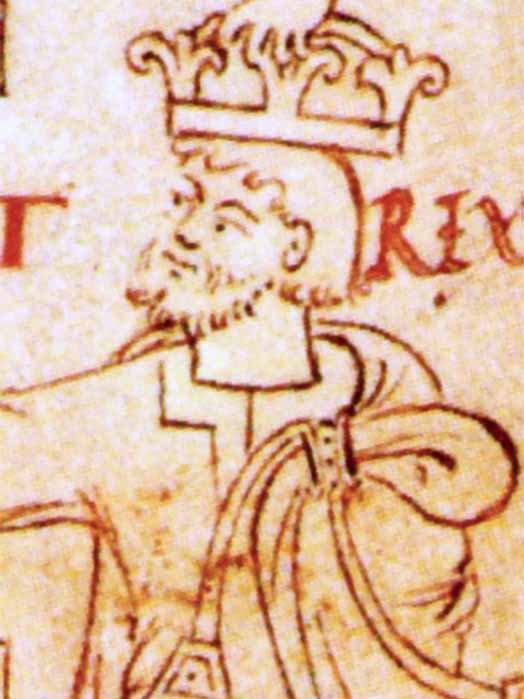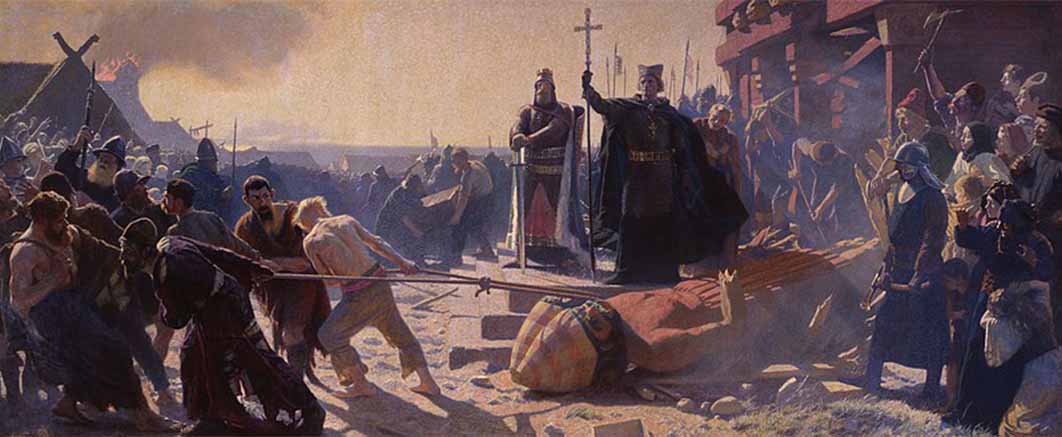
Medieval Colonialism: The Danish Duchy Of Estonia
Within the pantheon of great empires, the Kingdom of Denmark has received very little attention, yet this small European civilization was one the most enterprising of its day following its unification after the Viking period. As the Danes reached their peak under the stewardship of Valdemar the Great, they began to harbor even grander ambitions of conquest as they sought to expand the frontiers of their newly-unified kingdom. Their territorial desires were helped immensely by the papacy, who at the same time were appealing to the warriors of Christendom to set aside their differences to slaughter and extinguish all traces of pagan evil in the form of a crusade.
Instead of Jerusalem, where the majority of crusaders set out on their divine quests, the Danes looked to the Baltics in the east of Europe where a considerable infidel population still existed. To the rallying calls of Christian jihad, the Danes would establish Estonia as one of their first colonies. But as they ruled over this distant province between 1219 and 1346, many of the same problems experienced by the later colonial powers of the 19th and 20th centuries would arise, and, unfortunately for the Danes, many of the same disastrous solutions would also be attempted.

Contemporary illustration of King Canute, c.995-1035. Illuminated manuscript, Liber Vitae (1031) The British Library. (Public Domain)
The Danish Rise To Power
During the Viking period, the Danish Kingdom began to unite in the first step on their way to establishing themselves as a major European power. At the beginning of the 11th century, the kingdoms of central Denmark started to fuse together under the reign of King Gorm the Old. By 1013, the Danish were sufficiently strengthened to attempt a successful invasion of England under the command of Sven Forkbeard. A year after his annexation, Forkbeard died and was replaced by King Knut, (or Canute) who oversaw the construction of a robust Danish-English empire stretching across the North Sea, and that also included swathes of territories in parts of Norway and Sweden. However, the stability of the Danish empire was over-reliant on the strong personality of the king, and after King Knut died the Danish duchy crumbled once again, after only a momentary glimpse of prestige on the international stage.
Although it ended in disaster, King Knut’s rule showed it was possible to build and maintain a unified Denmark. Up until the 11th century, the forging of a strong Viking identity was largely based on the glory and plunder of piracy. As the century dragged on however, western European powers started to defend themselves more effectively against the seaborne Danish menace. Consequently, the Vikings were shut off from much of western Europe, starved of ill-gained spoils and booty. The knock-on effect of their newfound isolation was a more convincing move towards Danish unification, as local warlords searched for more efficient and centralized ways to control and tax their local populace as a replacement revenue stream. In addition, the growth and spread of the Church in Denmark during the 11th century was another essential factor, as widespread Christianization helped further integrate Danish tribes into one unit.
- Huge Hoard of Viking Sword Parts Found in Estonia
- Cnut the Great: the Myth, the Man, and the Multi-National Viking Monarch
- The long goodbye to Scandinavian Paganism and the Christianization of three realms
As Denmark solidified, stronger kings emerged, now able to exercise sovereignty over the entire realm. The first notable monarch to enjoy authority over most of Denmark’s regions was King Sven Estriden, whose reign took place in the middle to late 11th century. On the other hand, the growth of this new Danish empire continued to be stunted by power struggles between the king and the Church. Estriden’s successor, St Knud, for example, was assassinated because of his attempt to enforce further taxation on his subjects at the expense of the Church.

King Valdemar the Great and Bishop Absalon Topple the God Svantevit at Arkona in 1168. (1894) by Laurits Tuxen (Public Domain)
It was only until the accession of Valdemar the Great to the throne in 1157 that Denmark truly became a formidable global superstar. Valdemar claimed victory after a vicious civil war, and his administration mostly eradicated the petty squabbles of regional warlords that had caused the internal conflict to erupt in the first place. Valdemar’s secure grip on the crown was bolstered by the appointment of strong bishops and churchmen, creating a resilient system of government that allowed the Danes to construct vast fortresses and castles. Fortifications not only helped defend their homeland, but also acted as robust centers of administration where taxation and royal policies could be more easily implemented.




